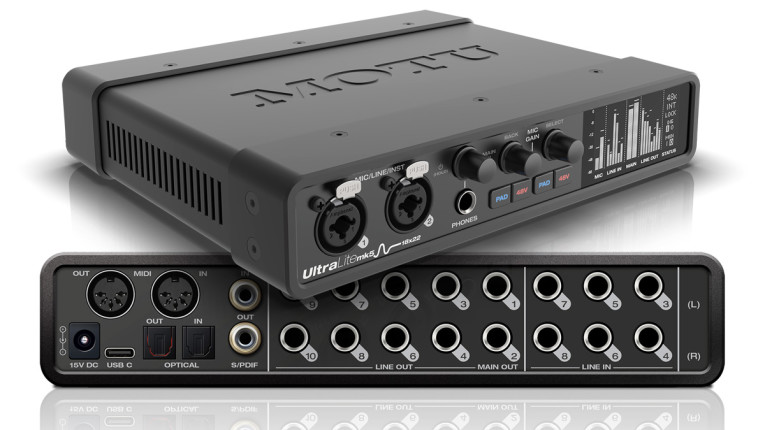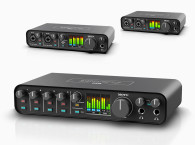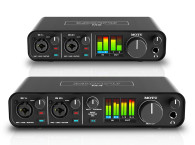
Digital Performer was always favored by serious music composers and sound designers and the new Digital Performer 11 update is a strong effort to improve all the tools that those users require from today's audio software, while improving the platform itself without interface disruptions. “DP’s streamlined and customizable user experience is now more powerful than ever,” says Jim Cooper, Director of Marketing at MOTU. “We’ve packed amazing new technological advancements into familiar UI elements for easy adoption into users’ daily workflows.”
With the new Articulation Maps feature, Digital Performer users can take full control of the expressive depth of today’s most advanced orchestral sound libraries, including VSL, East West, Spitfire, Cinesamples and many others. Users can create or import articulation maps to build dynamic instruments and ensembles, allowing them to play, record or program expressive performances with unprecedented realism and musical impact. Each articulation can be mapped to a symbol, stem ornament, alternate notehead or custom text (such as con sordino) in DP’s QuickScribe notation editor.
Symbols remain connected to their orchestra library sounds, so that what a user sees is what they hear. Because notes remember their symbol, users can instantly switch maps at any time (to a different sound library, for example). In addition, each articulation can trigger multiple forms of output, from on-velocity changes to note stacks, providing support for even the most advanced orchestra libraries, such as the VSL Synchron engine. DP’s Graphic Editor provides clear, intuitive editing of articulations in separate lanes.
In Digital Performer 11, users can record multichannel output from a MIDI Polyphonic Expression (MPE) controller — such as a Roli Seaboard — as regular MIDI notes with encapsulated MPE expression data. After recording a range of gestures (strike, pressure, slide, glide and lift), users see a single stream of normal MIDI notes each containing their own note-specific controllers (generated by the performance) superimposed on top of each note for easy and intuitive editing in DP’s familiar piano roll. Or users can view and edit each controller in a separate lane using DP’s familiar and powerful continuous controller (CC) editing tools.
A new Scale tool allows users to increase or reduce the amount of expression by dragging up or down. MX4 and DP’s other included synth plug-ins are MPE-enabled, so users can get started with their MPE controller right away.
DP11 adds audio to its Retrospective Recording capabilities. Now, DP always listens to both MIDI and audio input sources, capturing everything, even when not recording. Like magic, users can immediately recall any audio or MIDI material they’ve recently played. For both MIDI and audio input, Digital Performer ensures that users never lose that precious, fleeting creative moment.
A major upgrade of Nanosampler serves as every DP user’s go-to virtual instrument for creating unique beats, instruments and sounds. Drop in a sample and start stretching, slicing, randomizing and transforming audio into just about any sound or instrument you can imagine. New features include three playback modes (Classic, 1-shot and Slice), ZTX time stretching, beat slicing with Randomize and Auto Randomize, Repeat, Reverse, and a ground-up rewrite of the UI.
And Digital Performer 11 is fully qualified for macOS Big Sur (11.x) and the latest generation Apple silicon Macs. No Rosetta required. Optimized for native multi-core performance, DP’s audio engine prioritizes audio threads on high-speed cores and reserves CPU bandwidth for critical, time-sensitive processing.
Users also gain complete hands-on control of DP’s extensive Clips window with popular pad controllers like the Novation Launchpad Pro mk3 or Akai APC-40, to trigger individual clips or entire scenes (sections of songs), apply filter sweeps and other effects processing, etc, and other features used in live performance. And in live performance mode, all effects are processed in real time, rather than pre-generated, for instant responsiveness in critical performance situations.
There are also many new interface improvements, new tools and features throughout. DP 11 also includes new control surface plug-ins for the current Native Instruments Komplete Kontrol lineup, including the M32, A-Series, and S-Series MK2 controller lines, plus hot new iCON Control mixing worksurfaces. DP’s EuCon plug-in has also been substantially updated, including support for the Avid S6 console. In addition, users can now use a EuCon-compatible worksurface with DP running on Windows 10. There are also enhancements in support for MCU and HUI-compatible control surfaces.
Digital Performer 11 is now shipping for macOS (10.13 thru 11.x) and Windows 10 (64-bit). Pricing remains the same: $499USD (street price) for the full version and $195USD for the upgrade from previous version.

Redesigned MOTU UltraLite-mk5 with New ESS DAC Converters
MOTU is now shipping the UltraLite-mk5 ($595 USD), a ground-up redesign of its 18x22 half-rack USB-C, 24-bit/192kHz audio interface for macOS, Windows and iOS. The 5th-generation UltraLite-mk5 matches the connectivity of its popular predecessors with a total of 40 simultaneous I/O channels, including two front-panel XLR/TRS combo-style mic/line/hi-Z guitar inputs with preamps (+74 dB of gain), 6x10 balanced quarter-inch analog I/O, 8-channel ADAT optical (switchable to stereo TOSLink), stereo RCA S/PDIF I/O and MIDI in/out jacks, all housed in a fully redesigned steel enclosure with molded aluminum alloy end caps.
A new high-resolution, high-contrast white OLED display provides precision metering for all analog inputs and outputs, along with digital I/O activity indicators and status info. Updated ESS Technology DACs drive all analog outputs, including headphones, with the new ES9026PRO DAC delivering an impressive 125dB dynamic range on the line outputs. Analog inputs vastly outperform earlier models with measured 120 dB dynamic range and -114 dB THD+N (0.0002%). The mic inputs deliver -129 dB Equivalent Input Noise (EIN).
The included CueMix 5 software has also been completely re-engineered as a native app for macOS, Windows 10 and iOS. With a fresh new GUI, CueMix 5 simplifies hardware (direct) monitoring, allowing users to engage monitoring for each input with one click, directly on the Home screen. Separate mix tabs let users quickly create independent monitor mixes for each analog output pair, complete with 4-band parametric EQ, gating, compression and reverb.
www.motu.com









